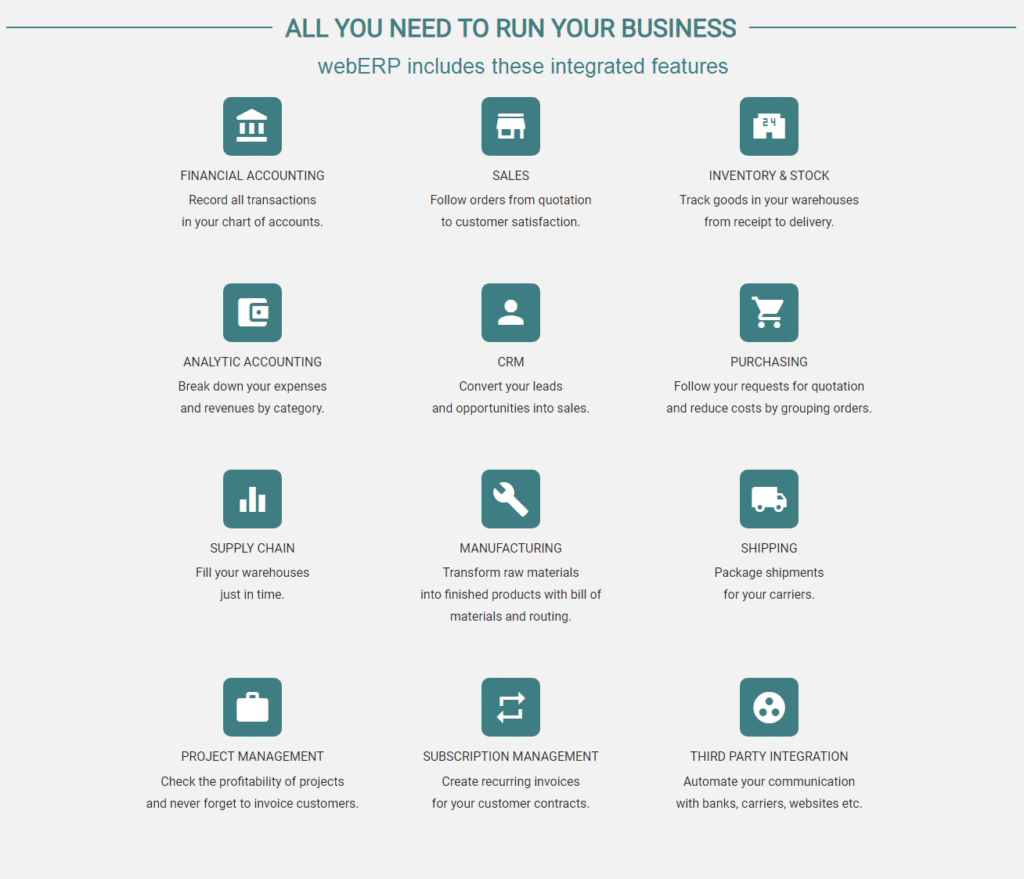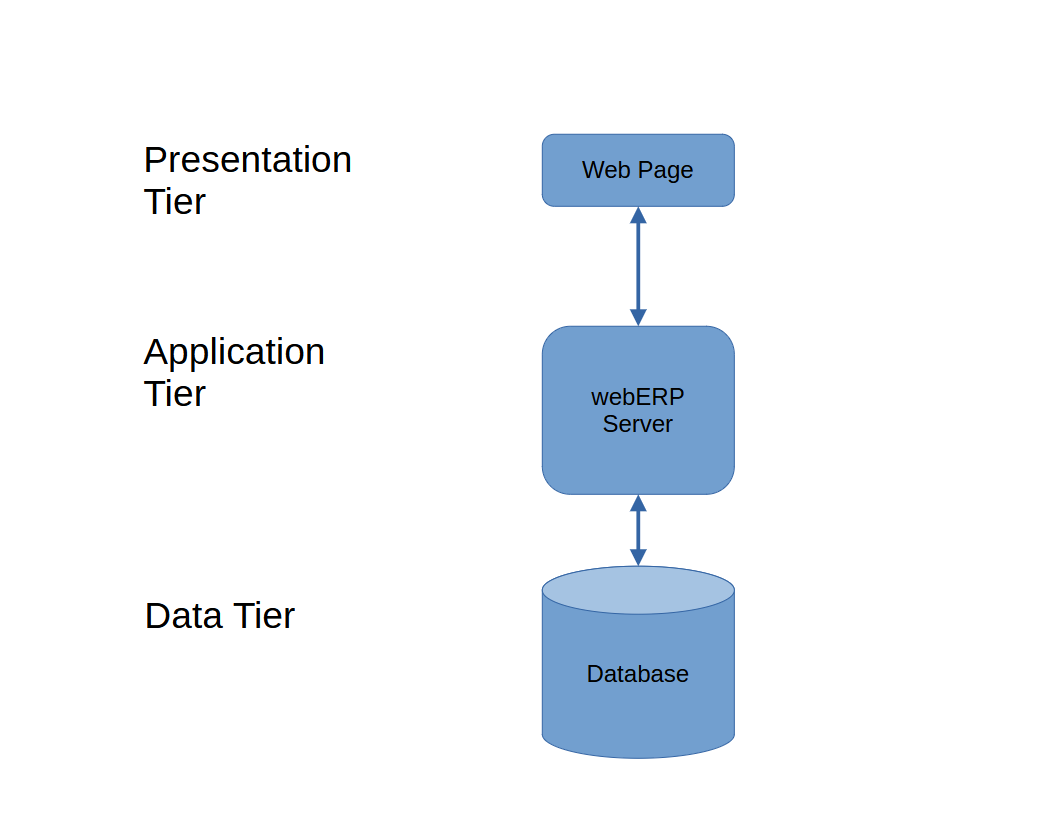What is webERP?
webERP is open source business software, modular, scalable, and secure, and suitable for companies of any size. webERP can be used as a general purpose ERP system, or as a framework for creating custom bespoke business solutions.
The project was founded by Phil Daintree, an accountant, who published webERP using the GPL open-source license in 2004. His goal was to provide a web-based ERP system that was easy for business people to modify. Tim Schofield, another accountant, joined the project in 2007 and is the project’s current leader and “Benevolent dictator for life” (BDFL).
webERP Features
webERP can meet the needs of most any business.

Three-Tier Software Architecture
webERP follows a common three-tier business software architecture, consisting of the Presentation Tier (the users’ web browser), the Application Tier (the webERP server) and the Data Tier (MariaDb or MySQL).

Cost Effective Open-Source
Open-source software (OSS) is computer software released under a license that allows users to freely use, study, change, and distribute the software and its source code. A primary benefit is cost-effectiveness as OSS is typically free to use, eliminating licensing fees and reducing overall software expenditures. Furthermore, the collaborative nature of open-source development often leads to higher quality and more secure software, as a large community of developers scrutinizes and improves the code. Users also gain flexibility and control, being able to modify the software to perfectly suit their specific needs without vendor lock-in. Finally, open-source fosters innovation and transparency, as its open nature encourages new ideas and allows anyone to inspect the code for vulnerabilities or biases.
Open source is called free software, but free means the freedom to use and modify the software (unlike commercial proprietary software), not that it is without cost. webERP software is provided free of charge by the webERP project, but using the software requires a server, internet access, backup storage, domain registration, effort to install webERP and its dependencies and keep it up to date, effort to train users, etc. Regardless of whether software is open source or commercial proprietary, you need to consider the total cost of ownership (TCO).
webERP is provided according to the terms of the GNU Public License (GPL).
Open Source is more like a puppy than a free soda. You simply consume a soda, while a puppy requires continual maintenance and support.
Megan Samford, VP, Chief Product Security Officer – Energy Management, Schneider Electric, and ISA Global Security Alliance Chairperson
That being said, open source software can cost significantly less than commercial proprietary software because the typical software developer operates leaner and has lower operating expenses than a profit-driven corporation. With webERP, the software has no cost and you don’t have to pay more to use more.
Readily adaptable
You are often forced to accept a less than perfect software solution from proprietary ERP vendors not only due to the cost of the modules, but also due to the cost of making modifications to meet your unique needs. With webERP, you have the freedom to make changes.
Collaborative support
Open source software is typically developed by a non-competitive team, and not the employees of a single business. Consequently there is an attitude of working together to solve issues, test code, and provide assistance.
Regular releases
webERP is continually developed, adding new features and correcting any defects that are discovered (which are thankfully rare due to the diligence of the webERP project team).
The webERP project team releases versions periodically with new features or to resolve an issue that has been found. Releases are given a 3-digit release identifier following the semantic versioning protocol e.g. 5.1.3 (x.y.z).
- The first digit (e.g. “5”) is called the major version and changes when there is a major change in functionality, appearance or underlying technology (e.g. webERP v5.y.z supports PHP v8 while webERP v4.y.z requires PHP v7 or earlier).
- The second digit (e.g. “1”) is called the minor version and changes when a minor change in functionality has occured (e.g. webERP v5.1.z would have “minor” changes in functionality compared to v5.0.z).
- The third and final digit (e.g. “3”) is called the patch version and changes when an issue has been resolved but functionality has otherwise not changed.
Dive into webERP
Do you want to dive into webERP right now? The webERP project provides access to a free demo server. The server is available to the public, so do not enter confidential information (and please do not change the password or user language after logging in).
Access the demo server from the Demo page on the webERP project website https://www.weberp.org/demo.
